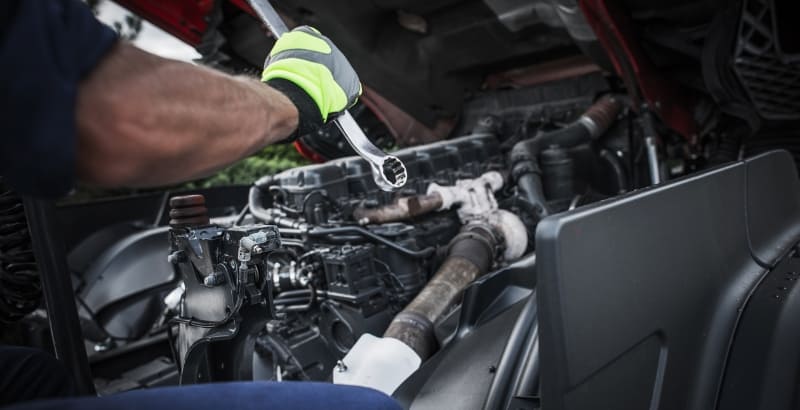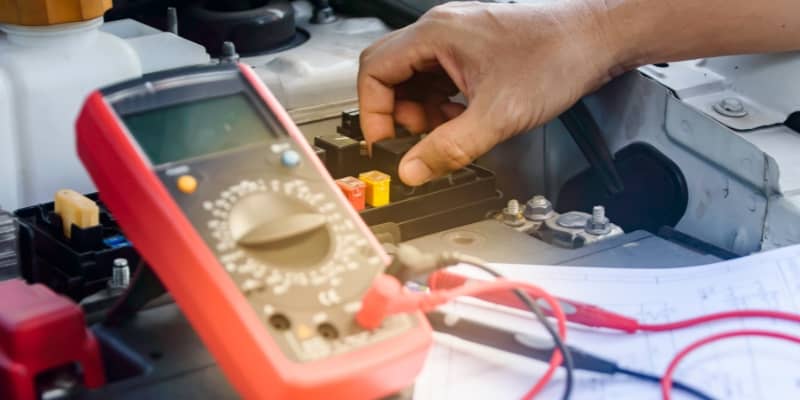Few things are as frustrating as dealing with an air leak in your truck. Not only do they cause your vehicle to run less efficiently, but they can also be very costly to repair. If you have an air leak, it’s essential to act quickly and fix it as soon as possible.
In this article, we will give you some tips on fixing an air leak on your truck. We will also provide some information on how to prevent air leaks from happening in the first place. Following these tips can keep your vehicle running smoothly and avoid costly repairs.
1. What causes air leaks in trucks?
Various things can cause air leaks in trucks, though the most common cause is a worn or damaged seal. It’s widespread for older trucks that have been in service for a long time. The seals around the cab and the door can wear down over time and start to let air escape.
In addition, air leaks can occur due to cracks or holes in the truck’s body. These cracks can be caused by impact or age, and in either case, the damages must be sealed to prevent air from leaking.
Air leaks can also be caused by loose or worn-out components such as hoses, fuel lines, and other parts that connect the truck’s engine and the outside world. Make sure to check all these components regularly to make sure they are not worn out or loose.
2. How to find an air leak on your truck
Finding an air leak on your truck is straightforward, provided you have the right tools. First and foremost, you will need a white cloth and a rubber mallet.
Start by inspecting the body of the truck for any cracks or holes. Check around the cab, the windows, and the doors, as well as the destination panel and the front grille. If you find any cracks, seal them using a silicone sealant.
Next, look for any loose or worn components. Please pay particular attention to hoses and fuel lines, as these are often the culprits of air leaks. If you find flexible details, tighten or replace them so they fit snugly.
Finally, perform a test. To do this, take the white cloth and gently rub it along the edges of the cab, the windows, and the doors. If you notice any air movement, there is an air leak, and you need to revisit the abovementioned steps.
3. How to repair an air leak on your truck
Once you have identified the source of the air leak on your truck, it’s time to repair it. There are two main ways to do this:
1. If the air leak is caused by a cracked or broken seal, you can use a silicone sealant to repair the leak. Use a clean cloth first to wipe the area around the leak. This will help remove any dust or debris. Then, using the silicone sealant, carefully fill the crack and allow it to dry for 24 hours before applying any pressure.
2. If the air leak is caused by worn components, like a hose, fuel line, or valve, you can replace them with new parts. Start by disconnecting the old part and cleaning the area around the leak. Then, install the new feature and reconnect it to the air system. Make sure to tighten all the connections and replace old gaskets or seals. Finally, check for any leaks and apply silicone sealant if needed.
4. How to prevent air leaks in trucks
Air leaks in your truck can be a real hassle to have to deal with, but fortunately, there are some steps you can take to prevent them in the first place. Here are five tips to help you avoid leaks of air on your truck:
- Check your rubber seals regularly – Rubber seals, like hoses and connectors, should be checked routinely to ensure they are in good condition and not likely to fail.
- Inspect rubber components for signs of wear – Inspect rubber components for signs of wear, cracks, or other damage. If you notice any issues, take the time to replace the element and examine the adjacent area for further damage.
- Clean your air system regularly – A build-up of dirt, dust, and debris can contribute to air leaks. So, make sure to periodically clean your air system and the components that connect to it.
- Use the correct size fasteners – Secure your hoses, connections, and other components with the right size fasteners. Choosing the wrong size could lead to a potential air leak.
- Bench tests your truck before each drive – Bench tests your vehicle and its air system before each movement. A simple static test can help you identify air leaks before they become more significant.
5. Conclusion
As you can see, there are many things you can do to prevent air leaks in your truck. Paying close attention to your vehicle and its components and completing regular tests and inspections can help to detect potential issues quickly and prevent them from escalating into costly repairs in the future.
However, air leaks can still occur. If they do, you can use the steps outlined in this article to diagnose and repair them. Carefully inspect each component and replace worn seals, connections, and hardware. If necessary, you may enlist a professional’s help for the repairs.







